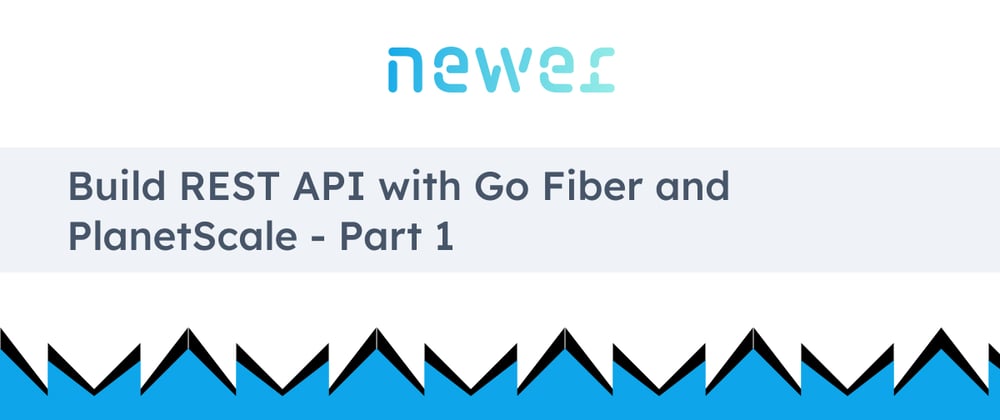Introduction
Fiber (gofiber.io) is web framework written in Go that much like Express in Nodejs. Fiber have many built in features to build rich web application such as Middleware, API Ready, Template Engine, Websocket support, Rate limiter, etc. They used fasthttp for the engine that claims is the fastest HTTP Engine in Go.
Today, we are going to build a simple REST API with Fiber and integrated it with PlanetScale for the database.
PlanetScale is serverless database platform for developers that built on top Vitess.
Set up PlanetScale
Go to https://planetscale.com and sign up, then setup your account such as organization, etc. Then, we'll create a database via PlanetScale CLI, you can also create the database via web.
I don't want to explain how to setup the CLI, PlanetScale's team has managed to explain it very clearly. Check out the documentation PlanetScale CLI.
Once success to setup the CLI, then create a database called fiber-pscale and specify the region of your database. I recommended to using the region that close that where you are. In my case I would like to use Asia Pacific Singapore. You can check the list of region, there are 6 regions at the moment.
$ pscale region list
NAME (6) SLUG ENABLED
------------------------ -------------- ---------
US East us-east Yes
US West us-west Yes
EU West eu-west Yes
Asia Pacific Mumbai ap-south Yes
Asia Pacific Singapore ap-southeast Yes
Asia Pacific Tokyo ap-northeast Yes
Create database
$ pscale database create fiber-pscale --region ap-southeast
Database fiber-pscale was successfully created.
Set up Application
We are going to use go modules, first we create empty directory and then initialize the modules. You can use your repo url or application name. In this case, I'm using my repo url.
mkdir fiber-pscale && cd fiber-pscale
go mod init github.com/maful/fiber-pscale
Then, there are 3 packages we're going to build. Package means the directory. Create thress directories.
cmd: this is the root application for initialize the Fiber and connect to PlanetScale databasehandler: contains all handler for the routing such as list data, create, etcmodels: contains data structure for the application
mkdir cmd
mkdir handlers
mkdir models
Since we are going to use Fiber and PlanetScale, install the modules
To access PlanetScale, we can use ORM from Go called Gorm, and since the PlanetScale database is built on top Vitess (MySQL), install the MySQL driver as well.
# install fiber
$ go get -u github.com/gofiber/fiber/v2
# install gorm to connect to planetscale database
$ go get -u gorm.io/gorm
# mysql driver
$ go get -u gorm.io/driver/mysql
Basic Handler
write basic handler with Fiber, create file called main.go inside cmd directory and add this script.
package main
import (
"net/http"
"github.com/gofiber/fiber/v2"
"github.com/gofiber/fiber/v2/middleware/logger"
)
func main() {
app := fiber.New(fiber.Config{
AppName: "Fiber with Planetscale",
ServerHeader: "Fiber",
})
app.Use(logger.New())
app.Get("/", func(c *fiber.Ctx) error {
return c.Status(http.StatusOK).JSON(&fiber.Map{
"message": "Hello world",
})
})
app.Listen(":3000")
}
it will create a new instance of fiber server, and listen to PORT 3000, back to terminal and run the main.go.
$ go run cmd/main.go
┌───────────────────────────────────────────────────┐
│ Fiber with Planetscale │
│ Fiber v2.18.0 │
│ http://127.0.0.1:3000 │
│ (bound on host 0.0.0.0 and port 3000) │
│ │
│ Handlers ............. 3 Processes ........... 1 │
│ Prefork ....... Disabled PID ............. 22443 │
└───────────────────────────────────────────────────┘
and then you can access it at http://localhost:3000, below is an example with the curl command.
$ curl --location --request GET 'http://localhost:3000'
{"message":"Hello world"}
you could use Postman or other similar software if prefer to use GUI.







Oldest comments (0)